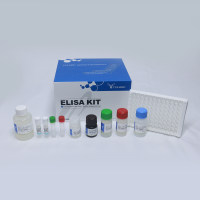Bisulfite Methylation Analysis of Tumor Suppressor Genes in Prostate Cancer from Fresh and Archival Tissue Samples
互联网
互联网
相关产品推荐

促销中大鼠肿瘤坏死因子α(TNF-α)/Rat TNF-α/tumor necrosis factor (TNF superfamily,member 2)/Tnf;Tnfa;Tnfsf2;Tumor necrosis factor;Cachectin;TNF-alpha;Tumor necrosis factor ligand superfamily member 2;TNF-a) [Cleaved into: Tumor necrosis factor;membrane for/TNF/ELISA试剂盒
¥3420¥3800

Prostate Specific Antigen/KLK3 兔单抗(Anti-Human)
¥800

Coagulation Factor III / Tissue Factor / CD142 鼠单抗 (FITC)
¥700

EpiArt DNA Methylation Bisulfite Kit V2(EM102)
¥1250

Recombinant-Arabidopsis-thaliana-Protein-CPR-5CPR5Protein CPR-5 Alternative name(s): Protein constitutive expression of pathogenesis-related genes 5; Protein constitutive expression of PR genes 5 Protein hypersenescence-1
¥13790
相关问答

